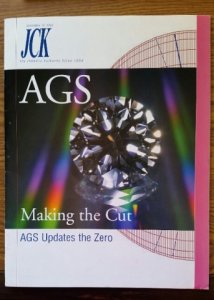- Joined
- May 3, 2001
- Messages
- 7,516
Texas Leaguer|1414185089|3772216 said:Though I respect Wink's opinion, I am NOT one of those vendors who disparage GIA XXX. No more than I disparage a GIA Si1. There are some Si1 that are great, some that are so-so, and some that I would not buy.Wink|1414183677|3772205 said:MelisendeDiamonds|1414122597|3771946 said:<Snip>
Those vendors consistently recommended here are also the same vendors who tend to disparage GIA XXX
<Snip>
I am one of those vendors who disparage GIA XXX and will continue to do so since it is a basically worthless grade that encompasses both beautiful and lifeless diamonds under the auspice of XXX.
When they publish a cut grade based on science I will be ecstatic in my change of tune.
Wink
I respect GIA for coming out with a cut grade for rounds, even if it is not as rigorous as it could be. When they finally did, cutting got better industry-wide. I look forward to the day when they do the same for princess cuts for the same reason.
For someone looking for the best of the best in terms of cut quality, you certainly cannot simply look for a GIA XXX and call it a day. You have to do more evaluation. But I also don't think I have ever seen a GIA XXX that was "lifeless" due to cut quality.
Let me give a better response. You are correct "lifeless" is too strong a word, but the real problem is that GIA has a double standard. Excruciatingly incremental descending color grades DEF etc. Invisible differences in the top 6-7 clarity grades and yet a single grade of EX for cut which unarguably permits visibly different levels of light return... And CUT has more impact on life than color or clarity. So why the double standard?
In my opinion it is because it allows the cutters to make more money selling diamonds at 1.00 or slightly larger that should have finished well below that 1ct mark if they were cut for beauty. When a cutter is able to milk a few percent more per each diamond by cutting steep deeps, then what a not surprising turn that it is now the steep deep that we see most often when looking through lots of GIA XXX for a decent looking diamond. If you cutting hundreds, or thousands of stones per month, this is BIG money. The GIA XXX allows the vendors to make more money and GIA profits from selling more reports to happy vendors while the public by and large gets a less appetizing (visually) product.
Just seems wrong to me, so disparaging I will go...
When they deign to do it right, I will sing a new tune, and gladly.
Wink





300x240.png)